Most people don’t think of Chokecherry when they want to add colorful berries to the garden. Aronia are native to North America and are not only pretty when heavily laden with fruit (which is edible) but they also have pretty white or pink flowers in the spring and pretty fall color.
Both main types of Aronia (Aronia arbutifolia – red chokeberry and Aronia melanocarpa – black chokeberry) are native to much of the US eastern seaboard.
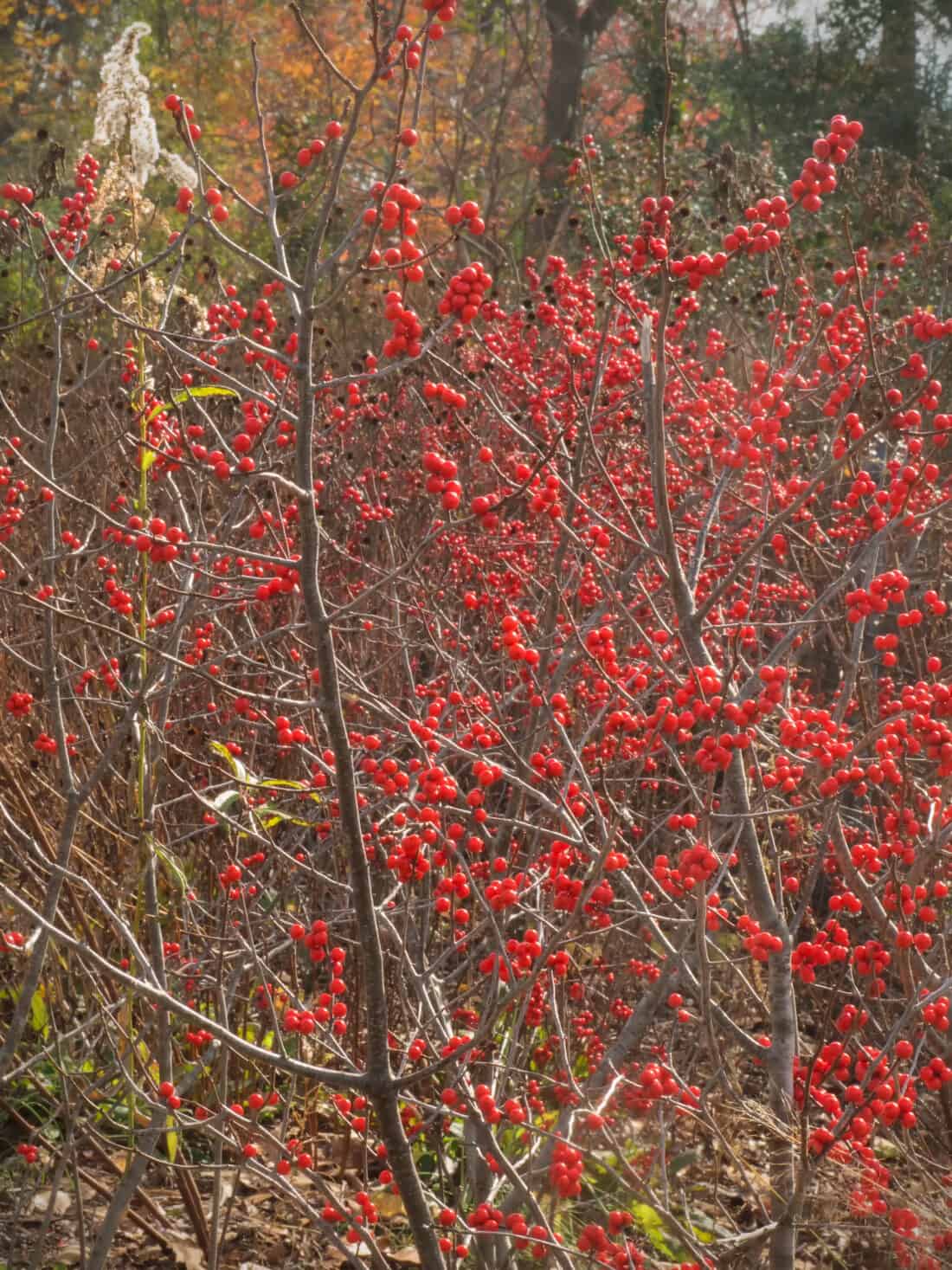
Red Chokeberry – Aronia arbutifolia
I’ve planted aronia arbutifolia – a beautiful shrub – for many clients. It is a plant I have relied on when I have a shady corner, probably near the home’s dripline (so the soil tends on the moist side) and I don’t want too much bulk. Red Chokeberry isn’t a full shrub – it tends to be bare on the bottom (so great if you have something you want to plant beneath it, and I like it for its open and wild shape and airiness.
Aronia Arbutifolia – commonly known as Red Chokeberry- likes it on the wet side and provides beautiful color in the fall and pretty flowers in the spring and berries in the late fall and winter.
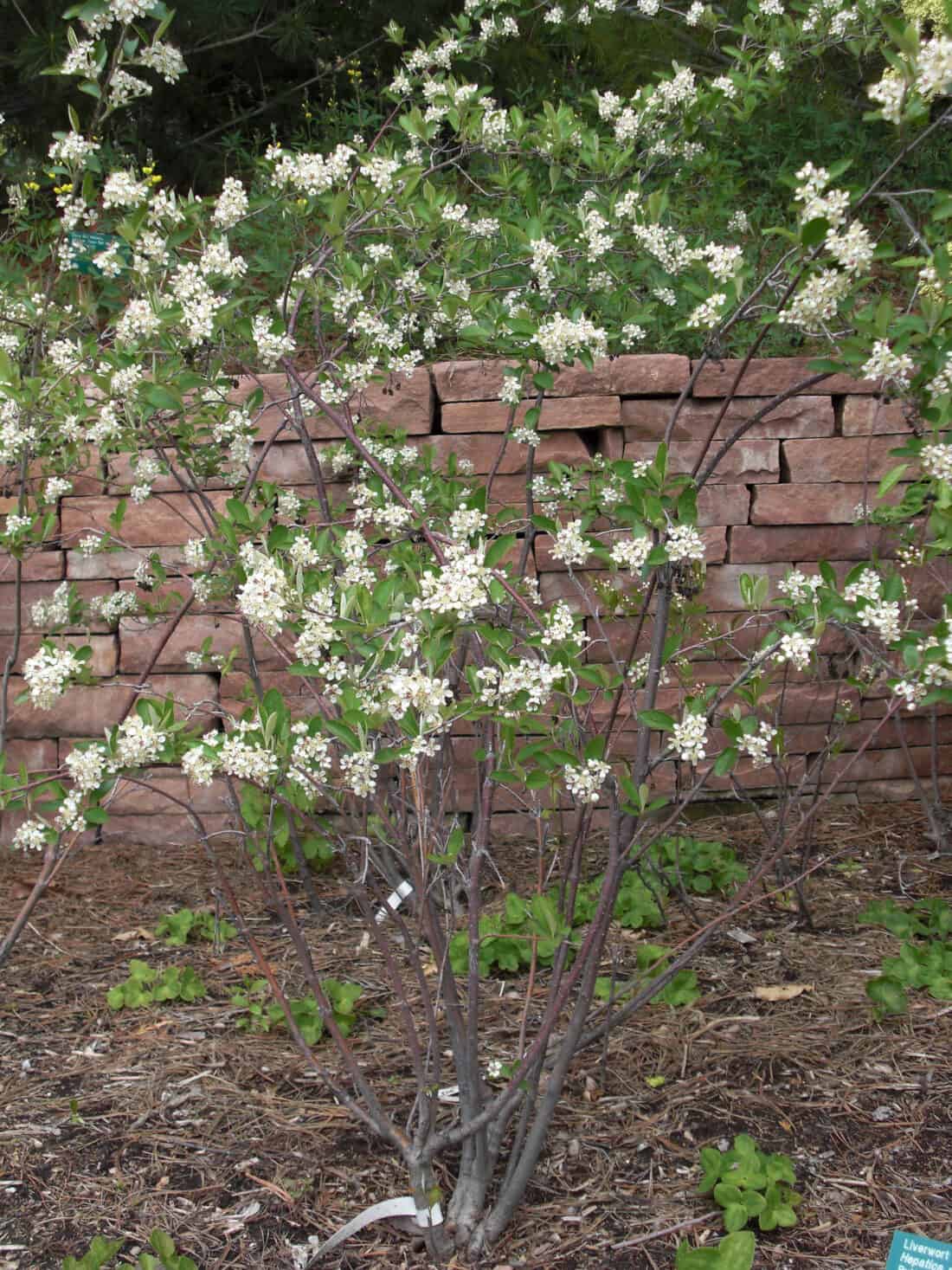
Adding Aronia Bush to My Own Garden 2024
I am planning on adding a few aronia to my landscape this season to blend my forest edge and boost my native plant collection. But also because I’m also partial to a sentimental plant.
When I was a kid, my grandparents lived in the Big Thompson Canyon outside of Estes Park, CO. There were shrubs that grew wild on their property that they referred to as chokecherries. My grandma always served us homemade chokecherry jelly, chokecherry syrup on pancakes and ice cream, and even chokecherry liqueur.
Are Chokecherries and Chokeberries the same?
Uh, No. Chokecherries (which are native to Colorado, among other states – and including Massachusetts) are Prunus virginiana. And Chokeberries are Aronia. Not the same – but they are often confused for each other. With good reason.
The biggest difference is that Chokecherries are bigger shrubs, and the pitted fruits are more bitter and astringent. Aronia (both red and black) are sweeter and, depending on which variety, mature to either red or black (whereas chokecherries are black).
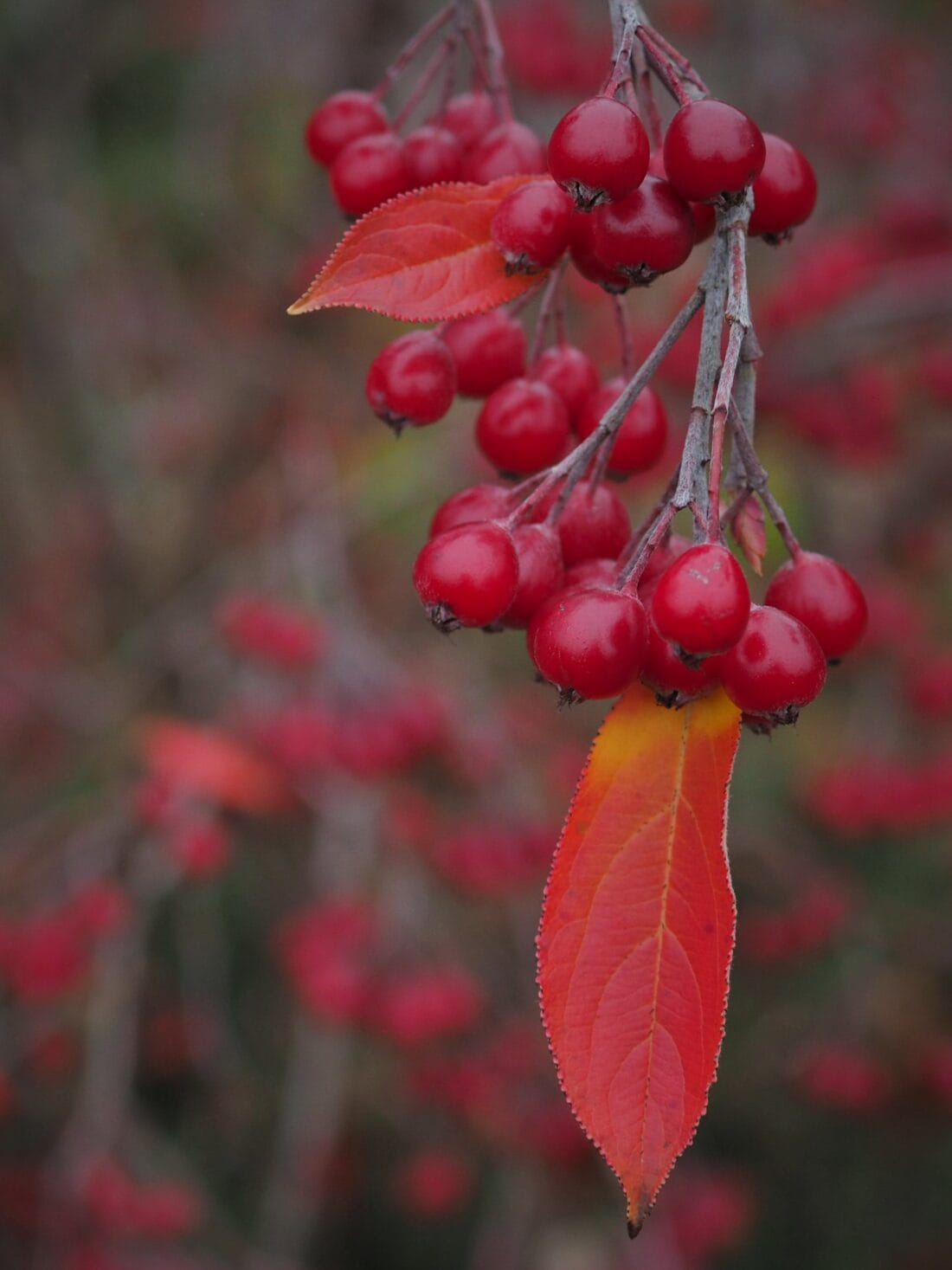
Growing Prunus virginiana, Aronia arbutifolia and Aronia melanocarpa
My plan is to grow all of them (Prunua Virginiana, aronia arbutifolia and aronia melanocarpa). I have to admit I am most excited about Aronia melanocarpa, though.
I’ve never planted Aronia melanocarpa – or eaten it. Of course, I am familiar with the fruit and products of Chokecherry (from Grandma). I’ve planted Red Chokeberry for clients but never eaten it. And Black Chokeberry I’ve neither planted nor eaten, but through my research, it seems like it might be the best for my garden goals. (a Native shrub that looks great, suits my site, and might best appeal to my culinary tastes).
Aronia melanocarpa ‘Viking” is a particular variety touted for commercial berry production in additions to being a great all-around landscape shrub. As for the Aronia arbutifolia, I will likely plant aronia brilliantissima for great berry production and fall color.
I’m looking forward to experimenting with all three of these native shrubs and seeing how they grow in my rocky hilltop garden in New England. I’ll report back.
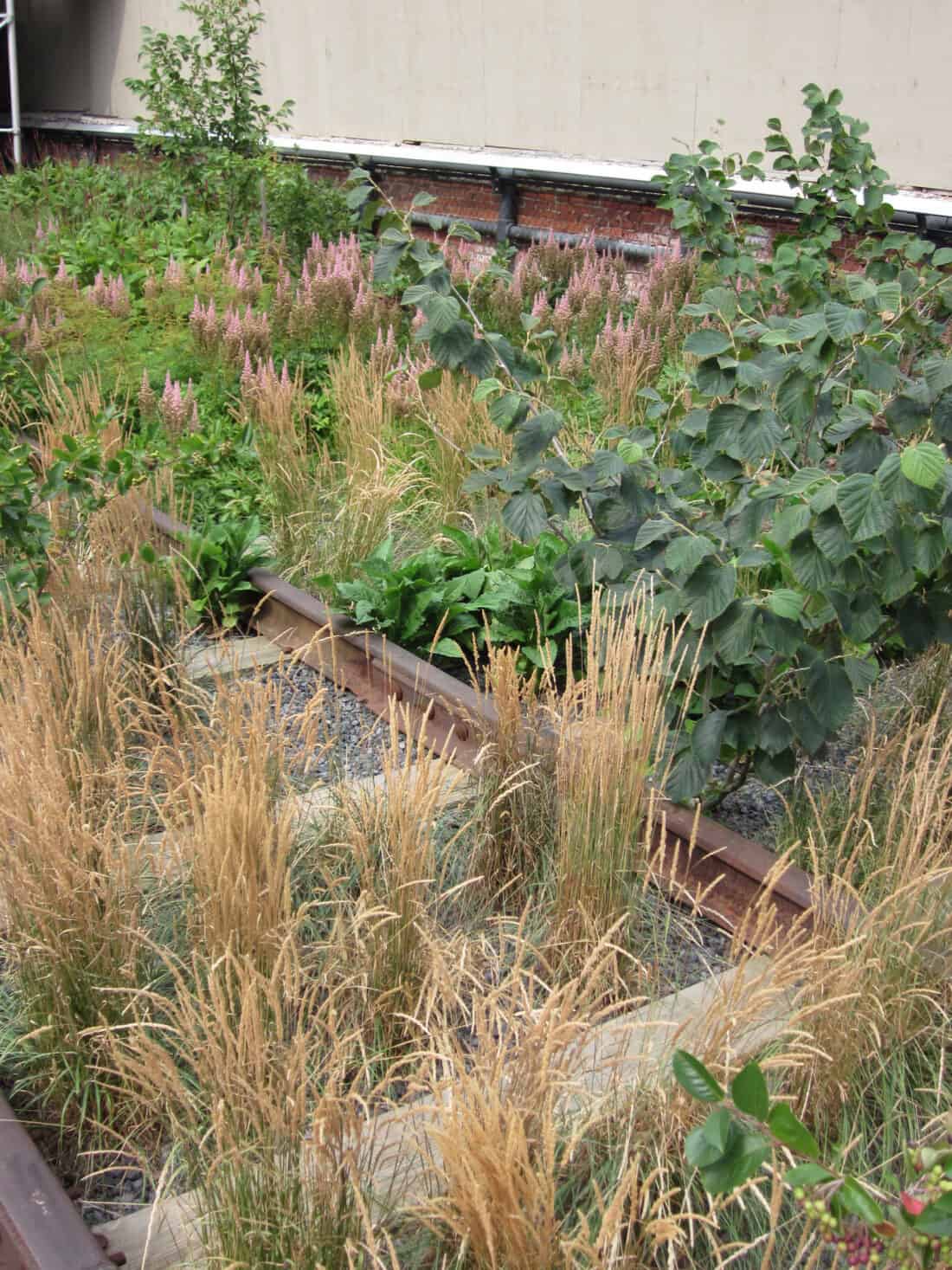
Does chokecherry or chokeberry attract Bears to Your Garden?
I also have a secondary goal – we live in a black bear habitat. I don’t exactly want them hanging around all the time or going through my garbage — but I have a lot of land here (6 acres), and I would be more than happy to welcome them and plant for them, like on the far side of the garden where we can all feel safe.
Bears were regular visitors to my grandparent’s garden and seemed particularly fond of feasting on the Chokecherries. They lived in a canyon, so as a bear would come down the main road, neighbors would call down to lower neighbors give updates on whose bushes were being gorged on. Bear Neighborrhod watch. I don’t want to be cavalier about sharing space with large animals – but I know they are already here.
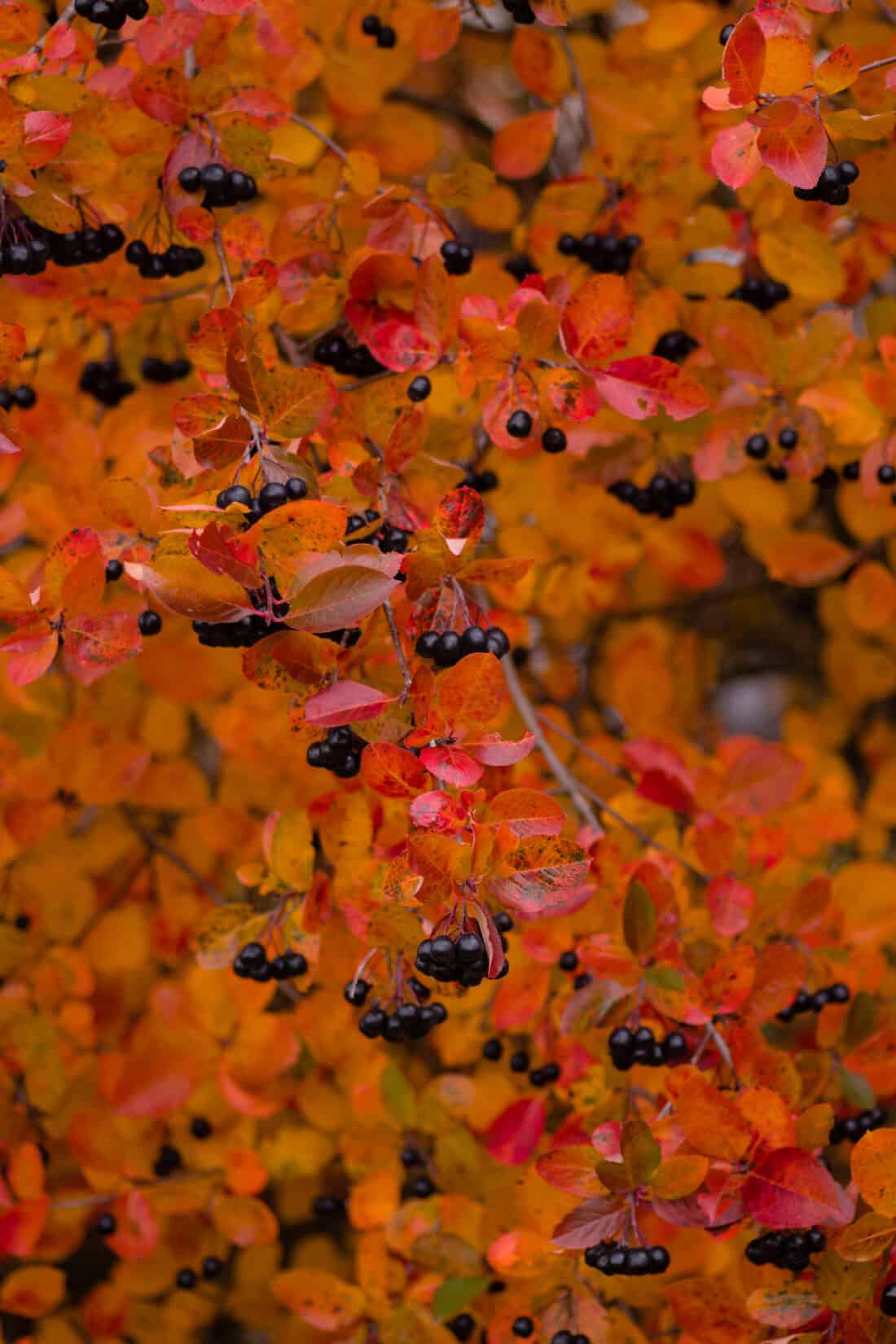
Great Companion Plants for Chokeberries:
Aronia shrubs (Aronia melanocarpa) are versatile plants that can be complemented by various companion plants. Here are five plants that can make excellent companions for aronia shrubs:
- Echinacea purpurea (Purple Coneflower):
- Purple coneflowers add vibrant color to the garden with their purple-pink daisy-like blooms. They attract pollinators and provide a beautiful contrast to the dark foliage of aronia shrubs.
- Amsonia hubrichtii (Threadleaf Blue Star):
- Threadleaf blue star is a perennial with feathery, blue-green foliage that turns golden in the fall. Its fine texture and graceful form create a pleasing contrast with the sturdy growth of aronia.
- Coreopsis spp. (Tickseed):
- Coreopsis varieties, with their bright yellow, orange, or red flowers, offer a cheerful and colorful display when planted alongside aronia shrubs. They are also drought-tolerant and low-maintenance.
- Heuchera spp. (Coral Bells):
- Coral bells come in various foliage colors, adding visual interest to the garden. Their mounding habit and delicate foliage create an appealing textural contrast with aronia’s bold leaves.
- Baptisia spp. (False Indigo):
- False indigo plants produce tall spikes of pea-like flowers in shades of blue, purple, or yellow. Their vertical growth and architectural form provide a striking backdrop for aronia shrubs.
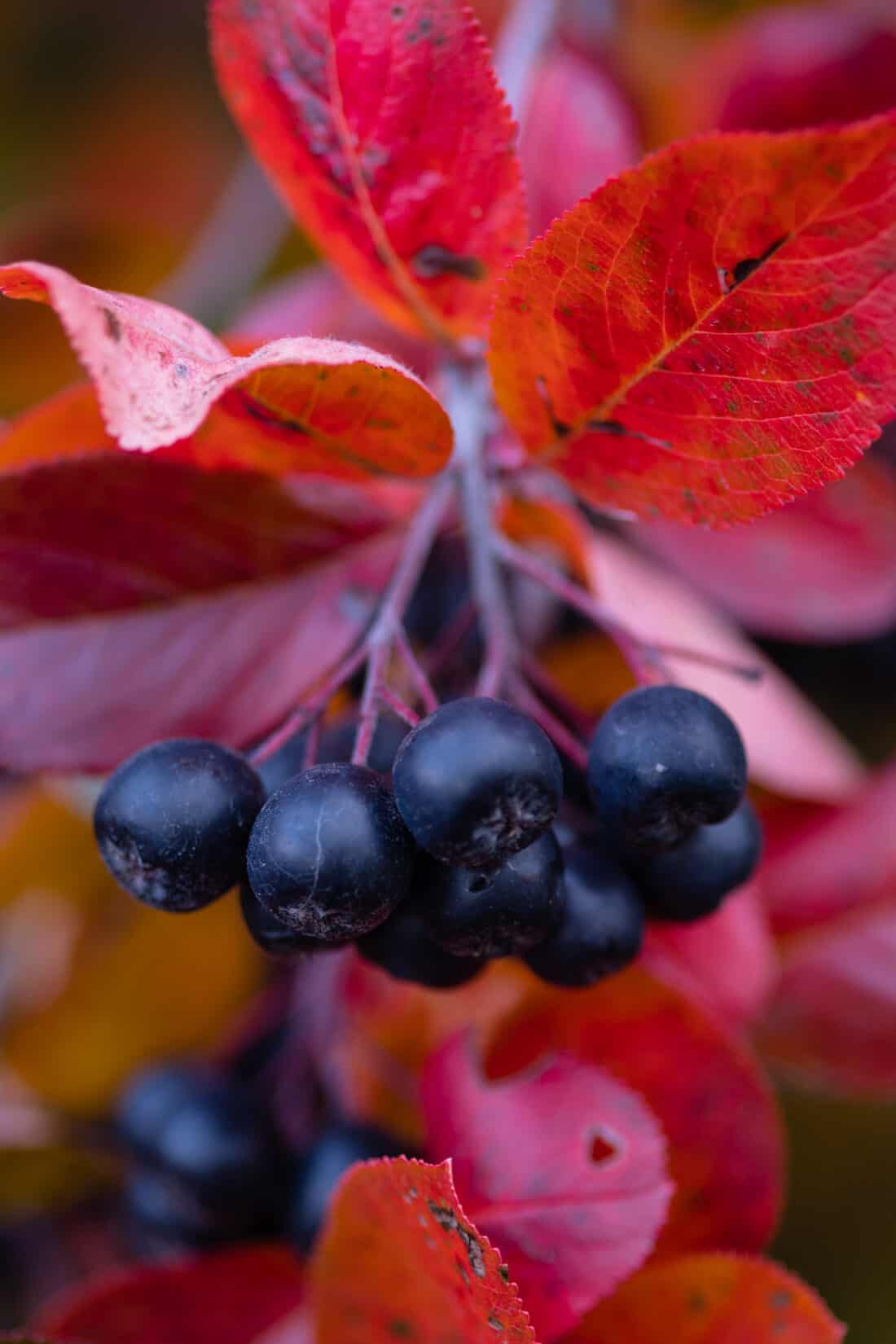
How to grow aronia berry plants?
Chokeberry (Aronia spp.) stands out for its tolerance of wet soils and its brilliant fall color, making it a tough and attractive choice for challenging sites. Unlike its similarly named cousin, chokecherry, chokeberry is well-behaved—forming tidy clumps without aggressive suckering.
You do know that chokeberry and chokecherry are two different plants? Both native, but rather different.
I think it is obvious that I do – since much of the article is dedicated to explaining that they are two different plants and not the same.